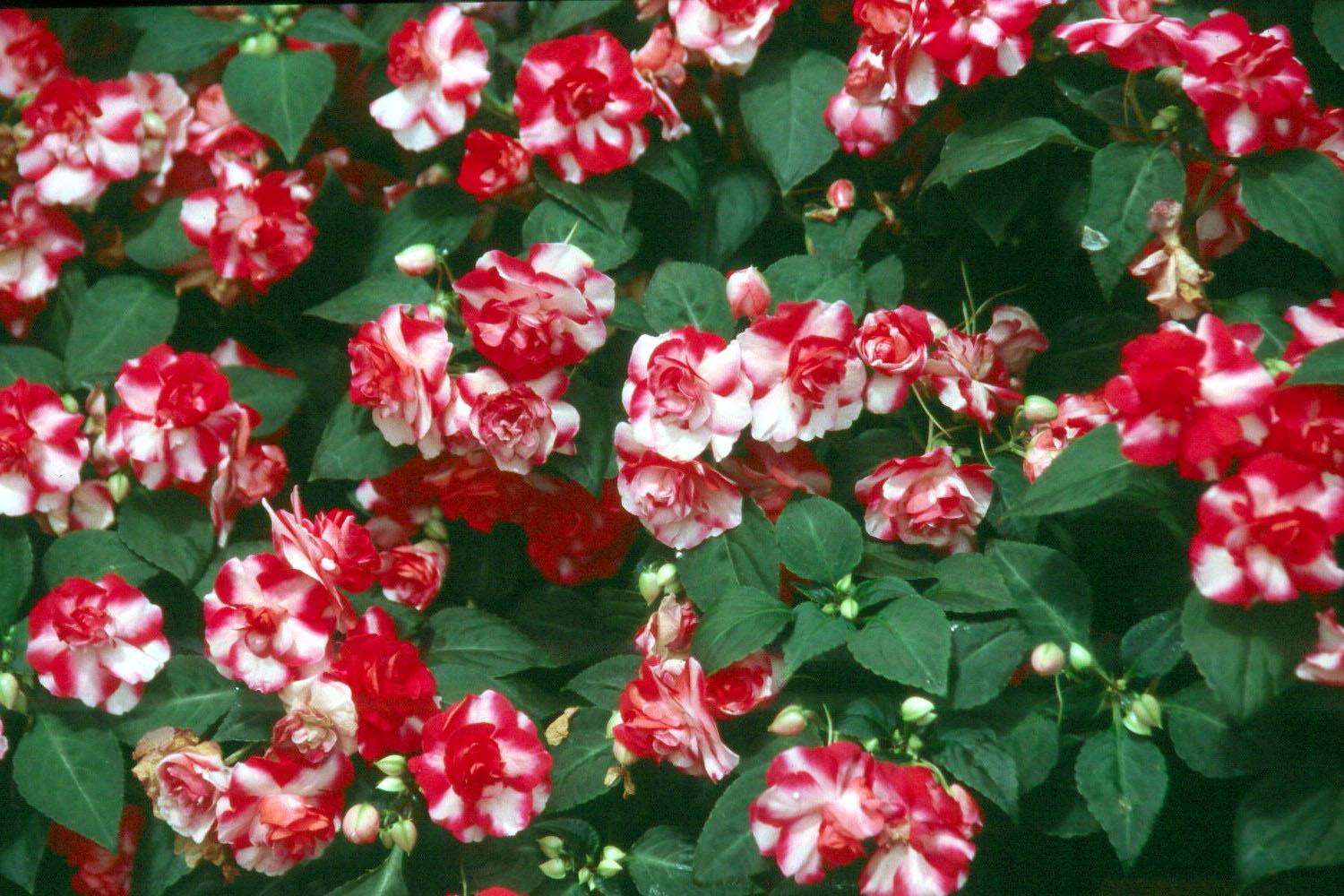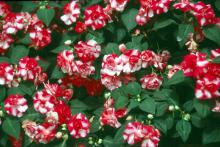Information Possibly Outdated
The information presented on this page was originally released on June 10, 2002. It may not be outdated, but please search our site for more current information. If you plan to quote or reference this information in a publication, please check with the Extension specialist or author before proceeding.
Rose-form impatiens meet shade challenges
By Norman Winter
MSU Horticulturist
Central Mississippi Research & Extension Center
This time last year I accepted a new challenge, horticulturally speaking, when my family moved into another home with a sun-challenged yard. Shade inspired us to plant azaleas, hostas, ferns and cast-iron plants like crazy, but some of the most enjoyable flowers have been the impatiens, especially the Fiesta double or rose-form impatiens.
If you have shade and want some drop-dead gorgeous flowers, you must give impatiens a try. You might consider it a rose for the shade or a rose with no thorns, virtually no diseases and relatively few, if any, insect problems. Lastly, it is a rose that blooms the entire season and never needs deadheading. I know they are not really roses, but you cannot help but admire the similarity when you look at a bloom.
Rose-form impatiens have been out for a few years, but big improvements have been made recently. A decade ago, seed companies were producing them, but were having difficulty producing the seeds and keeping the rose-form stable. They would revert back to single or semi-double.
Producers propagate most of these impatiens vegetatively and put them through a rigorous screening program for any unseen diseases. The result has been phenomenal, with huge rose-form flowers produced in abundance for terrific landscape displays. They also are well suited to large containers where they form huge mounds of blooms and leaves. They really liven up a porch, patio or deck and other areas receiving filtered light.
I still see some sold generically, but those known for superior performance are the Fiesta Series produced by Ball Flora Plant and the Tioga Series produced under The Flower Fields label, which is a division of Paul Ecke Ranch.
I am a little partial to the Fiesta Series that has more than a dozen colors, such as Salsa Red, Burgundy Rose and Coral Bells, including Purple Pinata and Stardust Lavender and Sparkler Cherry that will be introduced in 2003. The Tioga Series also boasts a dozen colors such as a gorgeous Rose on White, Purple Star and Neon Salmon.
These plants have the capability of showing off in your landscape from today until the first frost, so give them a proper home. Choose a site with morning sun and afternoon shade or high-filtered shade. Prepare your bed by incorporating 3 to 4 inches of organic matter to raise the beds and give good drainage.
As you till, work in 2 pounds of a slow-release, balanced fertilizer per 100 square feet of bed space. These impatiens get large, reaching 24 inches in height and as wide. Set out at the proper spacing and plant at the same depth they were growing in the container.
Impatiens combine wonderfully with caladiums that have the same water and light requirement. Try white caladiums with red veins with red impatiens. Bold drifts of impatiens planted with impatiens of complementary colors or colors of the same family will create a show. They also look very showy planted in front of evergreen shrubs, such as hollies, viburnums or ligustrums.
Keep them mulched, watered and fed every six to eight weeks with light applications of a slow-release, balanced fertilizer containing minor nutrients. In late summer, should they look leggy, trim back about one-third to induce branching and new growth. Taking care of them during late summer pays huge dividends with color all fall.



